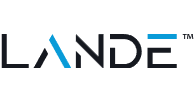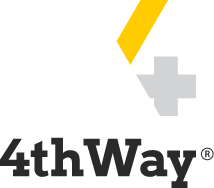See why 4thWay now accepts ethical ads.
Lande Strengthens Risk-Reward Balance
Lande continues to improve loan quality and offer double-digit lending rates.

Lande* was the first ever P2P lending company in either the eurozone or continental Europe to be fully assessed by 4thWay.
What does Lande do?
Lande's borrowers are Latvian, Lithuanian and Romanian businesses – mostly farmers. The loans usually secured on the farmer's land or home, on pre-priced grain with insurance against natural hazards, on farming machinery, livestock, and one or two other miscellaneous types of security.
Most loans pay lenders interest every month.
To lend, you must have a bank account in the EU, Iceland, Liechtenstein, Norway, the UK or Switzerland.
Lenders using Lande have lent €35 million since 2020.
How good are its borrowers and loans?
Loans are typically rolled over many times
While farmers initially borrow for 3-60 months, most expect to extend their Lande loans into new loans, often into perpetuity, rather like an ongoing credit facility, such as an overdraft.
Specifically, greater than 6/10 borrowers borrow repeatedly: so far between two and eight times. Just a little over 42% of loans issued in the past three months to January 2025 were brand new loans to new borrowers.
It's standard in farming all over the developed world to rely virtually continuously on both subsidies and loans. Yet that also increases the risks for lenders, as borrowers in perpetual debt have to continually use part of their profits to pay loan interest.
For example, the initial loan a farmer borrows from Lande lenders might be secured against a contract they have with a purchaser of grain in advance of the harvest. On receiving payment of the grain, the farmer borrower typically wants to use the proceeds for something else, such as buying new machinery, and will therefore request to take out a new loan through Lande to repay the previous one.
Lande bases each renewal on the latest available security from the borrower. So these are really better seen as multi-year loans where lenders get the opportunity to reassess security on an annual basis.
The quality of the security
The quality of security at Lande* is substantially more solid as you go from grain and livestock on to machinery, and then on to land and property.
Grain loans provide relatively weak security as farmers don't reliably use the grain or loan in the way they say they will. Livestock can also have issues, not least because repossessing and selling them is not easy, especially if the delinquent farmer is recalcitrant.
In contrast, land and property lending at Lande has proven to be exceptional quality. This is typical, as it can be relatively easily valued, it maintains its value well, and farmers can't easily hide it or sell it without Lande knowing.
Lande also pays new lenders 3% cashback in your first 30 days when you lend in new loans (as opposed to buying loans second hand from other lenders). While cashback is not a good reason to choose to lend, it’s a good bonus if you wanted to do so anyway.
As of early 2025, just over half of lending by lent amount is now being secured on land or property, which is up from under a third 18 months ago. 93% of lending is now either land, property or machinery.
The less secure lending, including grain, in newer lending is therefore just 7% of the amounts lent.
Indeed, grain used to be over a third of all lending, so this is a huge improvement in the proportion of loans that are approved with one of the weakest forms of security.
Only 1/84 loans and renewals made in the past three months were secured against harvest and none on livestock. Two of the 84 were secured on subsidies that are due to the farmers. All the rest were either secured on land or machinery.
How much borrowers can lend versus the security value
The maximum farmers can borrow is 60% of the value of any security type. The average lent has typically been even better, at around 45%.
However, you need to adjust this because of some of the weaker types of security. 4thWay, in all its core Lande risk assessments, has always made adjustments for the quality that has added circa 20-30 percentage points to the loan size versus the security valuation. So a 45% loan size is assumed to be around 65%+.
As a rule-of-thumb, then, you might therefore assume that a 60% LTV loan is more like an 80%+ LTV, with the exception of land loans. In some cases, this will be too conservative and others not conservative enough, due to varying ability to actually call in the often unique security, and due to farmer resistance.
While land and property loans still pay above 11% interest rates, the loan size has almost always been for less than half of the valuation of the securty, i.e. below 50% loan-to-value (LTV).
Since about 18 months ago, borrowers must also now provide additional security if they want a harvest loan greater than €20,000 or if rolling over a loan. Additional security on top of that is needed if Lande is unable to confirm the condition of harvest security at the point of rollover, e.g. the borrower says it is still in storage but Lande can't this time verify if it's true.
There is a red flag if the borrower wants to borrow again but the amount goes up.
In addition, Lande* only approves harvest loans of under €20,000 without additional security to the very best borrowers. At least in part, this means Lande needs to see they do have plenty of more tangible assets, such as machinery or a plot of land. So, if the borrower later asks to extend the loan, Lande will do so in return for taking additional security from the farmer.
The quality of the borrowers themselves
The strict standards on loan-to-value and improved standards on security quality have proven to be very sensible. This is because Lande's borrowers are not always the most skilled businesspeople, not especially financially literate or organised, and have sometimes even vigorously resisted settling their obligations. This adds pressure to the quality of the security and the likelihood of farmers suffering debt problems.
Lande's key people
We've always said that Lande's lack of experience was the biggest point to watch. Indeed, I don't think the word naive is over-the-top in how Lande started and they did go through a big learning curve.
For example, initially they didn't understand that their borrowers were going to want to roll over their loans.
That said, Lande has been using its experience over the past few years to rapidly improve what it does. Learning fast on the job isn't a given, as 4thWay has found that some P2P lending providers have been unable or unwilling to do so.
In addition, Lande has hired someone with what seems like precisely the right experience for these kinds of loans over 20 years. After about a year, the results in terms of the quality of the loanbook are already showing through.
Lande* now also has perhaps 10 lawyers working for them to stay on top of any loans where borrowers fail to meet terms, especially when they fall behind on payments. This is a really positive development.
However, Lande could still learn more from its own lending, which is now more than 1,200 loans (including rollovers). To that end, I would like to see it hire a banking analyst with the right background and training to manipulate loan data sets.
For example, neither of the key people I interviewed could tell me how many loans needed to be restructured due to borrower difficulties. For lending like this, which involves a high volume of small loans, such figures should absolutely be at their fingertips.
On top of that, I even had the sense they probably don't have a formal definition laid out for themselves as what constitutes a “restructured loan”. They really need to define all these things, automate their data and learn from it properly to speed up improvement of their loans and further minimise problem loans.
Lande's lending processes
The incentives for Lande's loan salespeople used to be seriously misaligned, as they did not emphasise loan quality. This is likely a substantial contributing factor to the backlog of mostly harvest loans in trouble prior to its improved loanbook and security requirements that it started implementing over a year ago.
Their new bonus scheme is better. Lenders will see the results of that over the next year or so in their own loans, although 4thWay will not be able to monitor it directly.
A key person at Lande now knows most borrowers by name and she takes a very close interest. This is a fantastic development for what is really a group of very diverse borrowers, although all farmers, and is likely to be useful for spotting and dealing with issues early on.
It's also a major contrast to previous loan monitoring, which was palpably ineffective. The earlier you can spot signs of issues, the greater the chance of getting repaid and getting the money more punctually.
When it comes to renewing loans, Lande* has toughened up its processes substantially. Borrowers are increasingly required to show they did indeed collect their harvests, that their income levels are strong, that they haven't got into more debt.
If there's a red flag, Lande claims it now requires borrowers to repay and pushes for repayment, although it was historically slow in this regard. As of early 2025, we've now collected sufficient data to see that this claim is supported by the numbers, although it is indicative only.
What is clear is that Lande has got tougher on chasing bad debts and has more rigid processes and timelines in place in terms of progressing to court. Previously, they had been far too soft. They now take a harder line, giving little leeway for borrowers if they fall behind.
About Lande's risks and interest rates
Like Lande, over the past few years 4thWay has learned better how to assess borrowers who are all from one segment only: farming. This is not a basket of many types of businesses that could offset each other if one segment of the economy does badly.
That said, even as Lande's loans became more complicated as it introduced more types of security, it has also become more stable with this diversification, especially as it's shifted towards land and property, or even machinery.
Around 1/5 of the unique loans (meaning after my estimated correction for rolled-over loans) are either late or a bad debt.
However, full (not partial) recoveries have been made on all bad debts that have completed recovery procedures, which is one-third of the bad debts.
Lande* still has to prove it can recover a lot more of that bad debt. But a very large proportion of these problematic loans are now in the last legal stage of enforcement through bailiffs and I currently expect many more recoveries to come in.
Furthermore, the safer security that Lande has shifted to over the past 18 months has already seen recovery rates that are 1.5 times as good as for the other types.
With interest rates between 10% and 13% on all loans, that's a very substantial reward to offset further risks.
Lande has discussed some currently confidential plans with us to add greater safety to for lenders and I think that there are good prospects of these features going online at some point this year. It will increase the safety net and provide additional assurance for lenders on both existing and future loans.
Our core risk-reward assessment and Lande's 4thWay PLUS Rating
I can confirm our reassessment in January 2025 finds it still earns the 3/3 Exceptional 4thWay PLUS Rating.
The 4thWay PLUS Rating is a measure of risk in very hard times versus interest rates, to see whether lenders typically come out of disaster periods with positive returns.
Lande's 4thWay PLUS Rating is greatly supported by the double-digit lending rates, which do a lot to offset risk. However, there's more uncertainty to Lande's 4thWay PLUS Rating than most others, due to the unusual, niche nature of these loans, which makes modelling in advance more difficult.
That said, I currently expect Lande* lenders to do fine after recoveries of late and bad debt start coming in thicker and some of the outstanding bad debts get repaid.
Picking loans yourself
We don't have the right sort of data from Lande to help us understand how easy lenders are finding it to diversify quickly across lots of loans, in a matter of months. We see that it typically has perhaps 20 completely new loans each month and a similar number of rolled over or otherwise linked loans.
Automated lending
Lande doesn't commit to automatically spreading your money across a specified, minimum number of loans. But you're accessing the same pool of loans that's available to lenders who choose their own loans.
If you want to be a real “pro” auto-lend user, you could initially set your auto-lend to spread your money across the lowest-risk loans. Selecting all land and property loans is the simplest way. If you also set those loans to a limit of 50% LTV, you're still getting access to almost all of those loans.
For those of you using the basic automated lending, without advanced filters, the minimum is €50 per loan. If you're filtering your automated lending (e.g. to focus on land and property) the minimum you need to lend in each loan is €100.
There are no additional costs for using the auto-lend feature.
How much cash can you deploy?
Loans are not very large – even the land and property loans. So the average lender lends just a few thousand euros, so it takes time to build a bigger lending portfolio if you have a lot to lend. Don't expect to be lending six figures through Lande any time soon!
Minimum lending amount
You lend for as little as €50.
Currency risk
If your own currency isn't the euro, there's currency risk (or reward).
The euro can easily move, say, 10% to 15% against most other currencies in less than a year – either in your favour or against. In such cases, one year's movement could wipe out – or double – your lending returns.
There are ways to contain this risk – and cut costs at the same time. To minimise currency risk and get the cheapest exchange rates, see The 13 Key Peer-To-Peer Lending Risks.
Regulation and lending structure
Lande is regulated in Latvia, which is seen in a positive light, overall, by the OECD and the IMF.
Lande has had approval to operate since launch and it received its full licence as a European crowdfunding platform in February 2024.
Pages linked to above:
The 13 Key Peer-To-Peer Lending Risks.
To get the best lending results, compare all P2P lending and IFISA providers that have gone through 4thWay’s rigorous assessments.
Independent opinion: 4thWay will help you to identify your options and narrow down your choices. We suggest what you could do, but we won't tell you what to do or where to lend; the decision is yours. We are responsible for the accuracy and quality of the information we provide, but not for any decision you make based on it. The material is for general information and education purposes only.
We are not financial, legal or tax advisors, which means that we don't offer advice or recommendations based on your circumstances and goals.
The opinions expressed are those of the author(s) and not held by 4thWay. 4thWay is not regulated by ESMA or the FCA. All the specialists and researchers who conduct research and write articles for 4thWay are subject to 4thWay's Editorial Code of Practice. For more, please see 4thWay's terms and conditions.
The 4thWay® PLUS Ratings are calculations developed by professional risk modellers (someone who models risks for the banks), experienced investors and a debt specialist from one of the major consultancy firms. They measure the interest you earn against the risk of suffering losses from borrowers being unable to repay their loans in scenarios up to a serious recession and a major property crash. The ratings assume you spread your money across hundreds or thousands of loans, and continue lending until all your loans are repaid. They assume you lend across 6-12 rated P2P lending accounts or IFISAs, and measure your overall performance across all of them, not against individual performances.
The 4thWay PLUS Ratings are calculated using objective criteria that can be measured and improved on over time, although no rating system is perfect. Read more about the 4thWay® PLUS Ratings.
*Commission, fees and impartial research: our service is free to you. 4thWay shows dozens of P2P lending accounts in our accurate comparison tables and we add new ones as they make it through our listing process. We receive compensation from Lande and other P2P lending companies not mentioned above either when you click through from our website and open accounts with them, or to cover the costs of conducting our calculated stress tests and ratings assessments. We vigorously ensure that this doesn't affect our editorial independence. Read How we earn money fairly with your help.
This page was first published on our EU website. The original is here.




